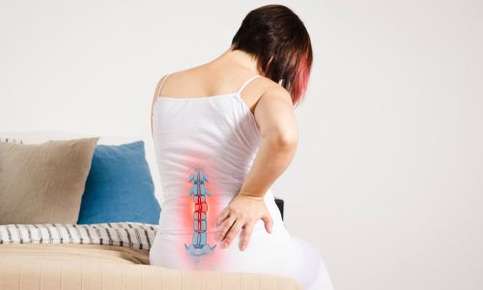Chiropractic Treatment for Spondylosis
- Created in Newsletter Library

Chiropractic Treatment Can Help Ease the Pain of Spondylosis
Aches and pains in your back or neck could be caused by spondylosis, a condition that occurs after years of wear and tear on your spine. Although popping a few pain relievers can decrease your symptoms, the relief is only temporary and can be accompanied by unpleasant side effects. Chiropractic treatment eases your pain naturally and offers longer-lasting relief of symptoms.
Spondylosis Explained
Spondylosis, commonly called arthritis of the spine, occurs due to several age-related changes in your spine. Thirty-three bony vertebrae support your body, making it possible to stand, bend and lift heavy objects. Small fluid-filled discs located between vertebrae absorb shock, cushion the joints and help the spine maintain its structural integrity.
As you age, the discs begin to dehydrate and shrink. As a result, they can't absorb shock quite as well as they could when you were younger. Your disks begin to gradually change around age 40, although you may not notice any differences for years.
The dehydration process can cause cracks or tears in the outer layer of disks, increasing your risk of herniated disks. Herniations happen when the soft, gel-like center of the disc protrudes and presses on spinal nerves, causing pain.
The space between the vertebrae gradually narrows as the discs flatten due to dehydration. When this occurs, painful bone spurs may form at the ends of vertebrae.
Age-related changes can also wear away the protective cartilage that cushions the ends of the vertebrae and stiffens the ligaments that hold the vertebrae together, resulting in pain and stiffness when you bend and move.
Common Spondylosis Symptoms
It takes many years to notice the effects of spondylosis. You may only experience occasional symptoms in your 40s and 50s. Your back or neck may hurt or feel a little stiff after you spend the day weeding your flower beds or participating in a 5K. These changes can occur even if you've been healthy and active all of your life and practice proper lifting techniques.
Your risk of spondylosis increases significantly with age. The Mayo Clinic notes that more than 85 percent of people over age 60 experience spondylosis in their necks.
Severe neck and back pain can occur if your condition worsens. You may notice that it's difficult to move or walk and may experience weakness or tingling sensations in your arms or legs.
How Your Chiropractor Can Help You
Chiropractic treatment can relieve pain, improve your range of motion and reduce pressure on your spinal nerves due to herniated discs or bone spurs. After performing an examination and conducting a few diagnostic tests, your chiropractor may recommend one or more of these treatments:
Don't let spondylosis pain take over your life. Chiropractic treatment offers a safe, natural way to control your symptoms. Contact us to schedule your appointment.
Sources:
Mayo Clinic: Cervical Spondylosis
Arthritis Foundation: How Chiropractors Can Help Arthritis Pain
American Chiropractic Association: Neck Pain and Chiropractic
American College of Physicians: American College of Physicians Issues Guideline for Treating Nonradicular Low Back Pain, 2/4/17
